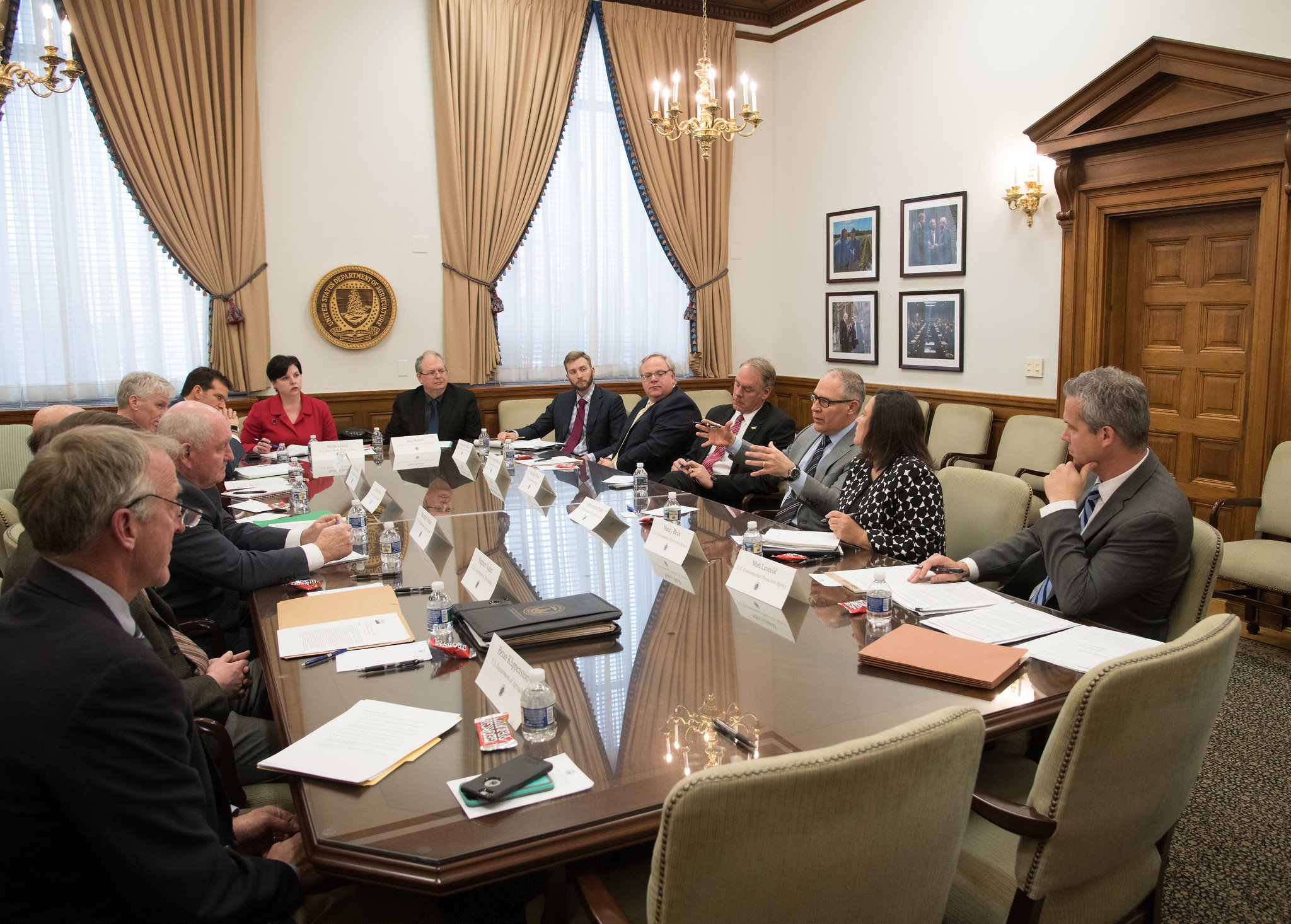West Virginia v. EPA: A Conflict of Judicial Restraint
Environmental Protection Agency Administrator Scott Pruitt speaks at an an interagency cooperation and regulatory reform meeting. Photo courtesy of the U.S. Department of Agriculture.
On February 28th, the U.S. Supreme Court heard an argument about a nonexistent law for the first time. On Monday, the Court heard oral arguments for West Virginia v. Environmental Protection Agency, a legal challenge to the Environmental Protection Agency’s ability to make future regulations on carbon emissions. This case is not just alarming because of the environmental impact, but because the Supreme Court is ruling on speculative law, setting an undemocratic precedent.
The case started when the Trump administration repealed the 2015 Clean Power Plan, an EPA rule that sought to cap the amount of carbon dioxide power plants may release. Scientists projected that this plan, which never went into effect, would reduce carbon emissions by 32% by 2030. It was replaced with the Affordable Clean Energy rule, which would require power plants to adopt energy efficient-technologies. However, environmental scientists criticized the ACE rule for its potential to create an “emissions rebound effect”: the idea that energy-efficient technologies could incentivize people to consume more and therefore emit more pollution. Nevertheless, the D.C. Circuit Court vacated Trump’s new rule on the grounds that it was a “mistaken reading of the Clean Air Act” and arbitrary and capricious in its attempt to “slow the process for the reduction of emissions.” The rule was remanded to the Biden administration’s EPA and not reinstated.
Although the current EPA said that it does not plan to pursue the Clean Power Plan or the Affordable Clean Energy Rule, the petitioners in this case (largely the coal industry and conservative states) are still litigating against the void administrative law. They request that the Supreme Court decide the question: to what extent does the Clean Air Act permit the EPA to reduce carbon emissions in the future?
Conservative and libertarian groups are financially backing the petitioners because the case may strengthen a “limited government” model. West Virginia v. EPA will likely set a precedent that extends beyond environmental regulation—it may also impede government agencies’ ability to regulate other industries like healthcare and technology.
However, these groups’ desire to have the Supreme Court rule on a theoretical future regulation contradicts the limited government they purport. Libertarians and conservatives often subscribe to former Justice Antonin Scalia’s endorsement of “judicial restraint.” This legal philosophy dictates that the judicial branch’s purpose is to resolve legal disputes, not create laws. According to this theory, the Supreme Court should defer to elected branches except in cases where their decisions are unconstitutional. Requesting that the Supreme Court rule on a future regulation stretches beyond the scope of its constitutional powers because prohibiting future laws is in itself “law-making.”
The petitioners’ supporters may argue that they do promote judicial restraint because the issues fall under the “major questions doctrine.” According to proponents of the “major questions doctrine,” the Constitution prohibits Congress from delegating major economic and political questions to government agencies. It intends to prevent unelected government agencies from making laws about issues that should be made by elected officials. In this case, the litigants claim that the Supreme Court should limit the EPA’s ability to regulate carbon emissions because of the subsequent economic impact.
However, applying the “major questions doctrine” in this case has a major contradiction. If proponents believe that only Congress should decide major economic and political questions, why are they requesting that the Supreme Court decide? To stay consistent with their philosophy, the litigants should pursue congressional action rather than judicial review. By bypassing legislative discretion, the litigants are pursuing an undemocratic track, one that violates the principles of judicial restraint.
Libertarians and conservatives may be less thrilled with the consequences of this case. Currently, the major questions doctrine has worked in their favor— they’ve blocked Biden’s eviction moratorium and vaccine mandate. But in this case, they are overextending the principle. The doctrine intends to limit non-elected officials’ discretion, not to transfer that discretion to the Supreme Court. If they want a limited government, expanding the role of the Supreme Court to rule on a hypothetical regulation at the expense of legislative power is contradictory. The Supreme Court has an obligation to its citizens to remain non-partisan. Finding a speculative regulation unconstitutional is dangerously political and should remain in the hands of Congress.
However, putting political and legal theory aside, regulating carbon emissions is a good thing. We have seven years to do something about climate change. The EPA is already significantly limited in its ability to regulate pollution. Current measures promoting renewable energy are structured in a way that “the market sets the price and the government controls the volume.” If the agency is inhibited even further, the economic costs of pollution will exceed the alleged costs incurred by regulations.
Although the litigators’ supporters may not share the same urgency to act on climate change, they should be concerned with this case’s precedent. To these proponents, I pose this major question: “Would winning this case be worth the overextension of Supreme Court power?”
Rachel Barkin is a senior at Barnard College studying political science and psychology. She loves drawing, hiking, and skiing.

